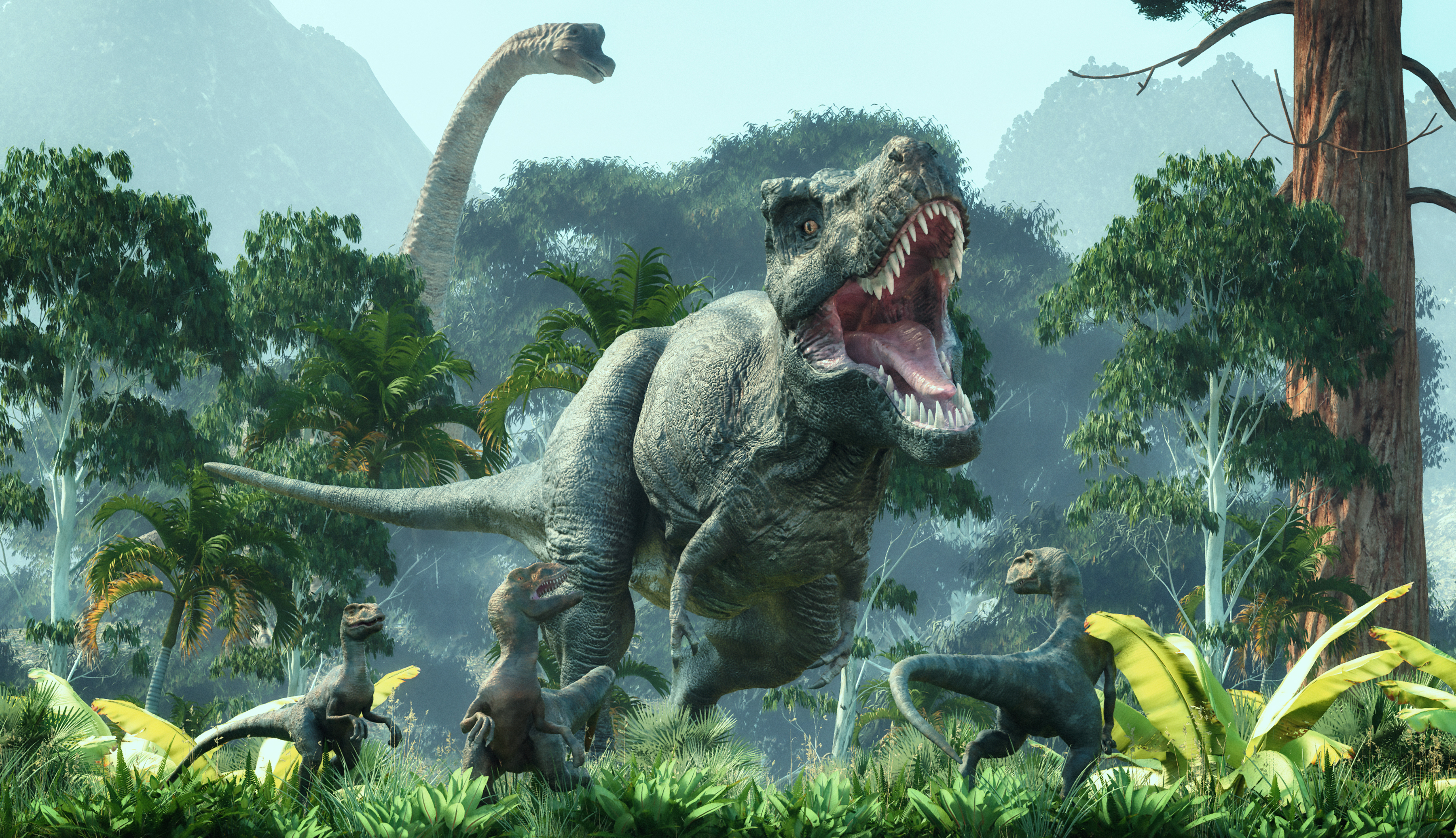What was the typical life span of a dinosaur?
What was the typical life span of a dinosaur? It depends on the size and species, of course.

Dinosaurs have left a wealth of information behind in their fossils, including how they defended themselves, what they ate and sometimes even how they died. But when these beasts bit the dust, did they leave any clues behind about how old they were, indicating whether they were youngsters, middle aged or old geezers?
In a word, yes, largely thanks to "growth rings" in their fossilized bones. These rings, which are laid down in a similar way to tree rings, were discovered only in the past few decades and have revealed that most nonavian dinosaurs didn't live that long, despite sometimes growing to huge sizes.
For instance, the Chicago Field Museum's fearsome Sue, one of the most complete Tyrannosaurus rex specimens ever discovered, died at age 33, her growth rings indicate. Herbivorous duck-billed dinosaurs, meanwhile, seem to have lived for only one or two decades, Thomas Holtz, a vertebrate paleontologist at the University of Maryland, told Live Science.
These young ages initially surprised paleontologists.
"I think a lot of people might have the impression that at least some dinosaurs got to be really big because they lived for a really long time," Steve Brusatte, a vertebrate paleontologist at the University of Edinburgh in Scotland, told Live Science. "Certainly, scientists used to think that."
Related: What happened when the dinosaur-killing asteroid slammed into Earth?
Large modern animals tend to be long-lived. African bush elephants (Loxodonta africana), Earth's largest living land animal, can live up to 70 years, and bowhead whales (Balaena mysticetus) can live as long as 200 years.
Get the world’s most fascinating discoveries delivered straight to your inbox.
But dinosaurs are another story. Holtz explained that a thin slice of animal bone has a series of parallel lines caused by the outward growth of the bone. A new line is produced every year, so counting these lines gives an accurate estimate of the animal's age.
These lines are created by annual changes in the way animals grow. In the spring and summer, warm weather and plentiful food means that animals have ample nutrition, enabling them to grow more quickly. But in the winter, when the weather cools and food becomes scarce, growth slows. These slowdowns in growth show up as the lines between bone layers.
But there are some complications with this technique of measuring growth. One is caused by the medullary cavity, the chamber inside a bone that produces bone marrow. As a bone grows, so does the medullary cavity, so it erases some of the early growth rings in that expansion. To get around this, researchers can superimpose the bones from smaller individuals of the same species over those missing lines in larger individuals to help estimate the potential total number, Holtz said.
Another complication is bone type. Some bones are better for spotting growth rings than others. "Ribs, or bones like the fibula that don't bear a lot of stress or weight, tend to have a cleaner record of growth," Brusatte said.
While dinosaurs didn't live as long as some of today's large animals, there are some similarities. For instance, bigger animals tend to live longer than smaller ones, and the same generally holds true with dinosaurs. Sauropods — a group of long-necked leaf eaters that includes the largest dinosaurs that ever lived — likely had the longest lives of all of the dinosaurs, with the oldest-known sauropods living to around 60 years old, according to Holtz.
In contrast, the 110-pound (50 kilogram) Stenonychosaurus inequalis grew to its maximum size in just three to five years, and likely did not live long afterward.
There are some ideas as to why dinosaurs had such short life spans. Perhaps their metabolisms — or the body's chemical processes, including converting calories into energy — played a role, Brusatte said. Some dinosaurs were at least partially warm-blooded, and they would have had incredibly fast metabolisms for reptiles, which could have led to rapid growth and early deaths, he said.
Or maybe reproduction was a factor. Many dinosaurs produced very large clutches of eggs, which meant they produced a lot of offspring in a short period of time, Holtz said. Long-lived mammals, on the other hand, such as elephants and whales, reproduce more slowly, so natural selection would reward longer life spans. However, this hypothesis is not without its flaws. For example, Galapagos tortoises (Chelonoidis niger) can produce large clutches of eggs but also live well into triple-digit ages, so producing a large number of offspring in one go does not always indicate a shorter life.
Ultimately, we still don't know why nonavian dinosaurs died so young.
Editor's note: This article was updated on July 12, 2024 to include the latest estimate of Sue's age.

Cameron Duke is a contributing writer for Live Science who mainly covers life sciences. He also writes for New Scientist as well as MinuteEarth and Discovery's Curiosity Daily Podcast. He holds a master's degree in animal behavior from Western Carolina University and is an adjunct instructor at the University of Northern Colorado, teaching biology.



